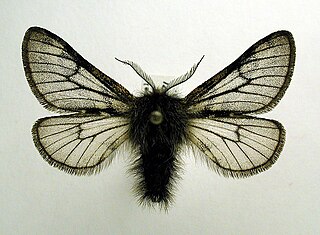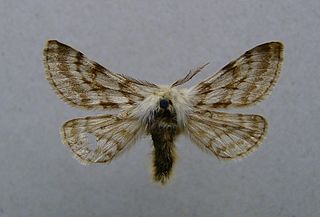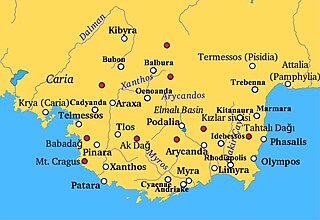
Lycia was a state or nationality that flourished in Anatolia from 15–14th centuries BC to 546 BC. It bordered the Mediterranean Sea in what is today the provinces of Antalya and Muğla in Turkey as well some inland parts of Burdur Province. The state was known to history from the Late Bronze Age records of ancient Egypt and the Hittite Empire. Lycia was populated by speakers of the Luwian language group. Written records began to be inscribed in stone in the Lycian language after Lycia's involuntary incorporation into the Achaemenid Empire in the Iron Age. At that time (546 BC) the Luwian speakers were decimated, and Lycia received an influx of Persian speakers. Ancient sources seem to indicate that an older name of the region was Alope.

Xanthos was an ancient major city near present-day Kınık, Antalya Province, Turkey. The remains of Xanthos lie on a hill on the left bank of the Xanthos river. The number and quality of the monumental tombs still standing is a remarkable feature of the site.

Olympus or Olympos was a city in ancient Lycia. It was situated in a river valley near the coast. Its ruins are located south of the modern town Çıralı in the Kumluca district of Antalya Province, southwestern Turkey. Together with the sites of the ancient cities Phaselis and Idyros it is part of the Olympos Beydaglari National Park. The perpetual gas fires at Yanartaş are found a few kilometers to the northwest of the site.

Phaselis or Faselis was a Greek and Roman city on the coast of ancient Lycia. Its ruins are located north of the modern town Tekirova in the Kemer district of Antalya Province in Turkey. It lies between the Bey Mountains and the forests of Olympos National Park, 16 kilometres (9.9 mi) south of the tourist town of Kemer and on the 57th kilometre of the Antalya–Kumluca highway. Phaselis and other ancient towns around the shore can also be accessed from the sea by daily yacht tours.

Lycians is the name of various peoples who lived, at different times, in Lycia, a geopolitical area in Anatolia.

Limyra (Lycian: 𐊈𐊚𐊎𐊒𐊕𐊁 was a small city in ancient Lycia on the southern coast of Asia Minor, on the Limyrus River.

The brindled beauty is a Palearctic moth belonging to the family Geometridae.

The Dii Consentes, also known as Di or Dei Consentes, is an ancient list of twelve major deities, six gods and six goddesses, in the pantheon of Ancient Rome. Their gilt statues stood in the Roman Forum, and later apparently in the Porticus Deorum Consentium.

Lycia is a genus of moths in the family Geometridae.

The Harpy Tomb is a marble chamber from a pillar tomb that stands in the abandoned city of Xanthos, capital of ancient Lycia, a region of southwestern Anatolia in what is now Turkey. Built in the Persian Achaemenid Empire, and dating to approximately 480–470 BC, the chamber topped a tall pillar and was decorated with marble panels carved in bas-relief. The tomb was built for an Iranian prince or governor of Xanthus, perhaps Kybernis.

Lycia zonaria, the belted beauty, is a moth of the family Geometridae. The species was first described by Michael Denis and Ignaz Schiffermüller in 1775 and it is found in most of Europe.

Lycia lapponaria, the Rannoch brindled beauty, is a moth of the family Geometridae. It is found in most of the northern part of the Palearctic realm, including Scotland.

Lycia alpina is a moth of the family Geometridae. It is found in the Alps on altitudes between 1,000 and 2,500 meters and in the Jura Mountains.
Coleophora conspersa is a moth of the family Coleophoridae. It is found in Turkey.

Lycia ursaria, the stout spanworm moth or bear, is a moth of the family Geometridae. The species was first described by Francis Walker in 1860. It is found in southern Canada and the northern United States, south to New Jersey and Iowa.

Trebenna (Τρεβέννα) or Trabenna (Τραβέννα) was a city in ancient Lycia, at the border with Pamphylia, and at times ascribed to that latter region. Its ruins are located east of the modern town Çağlarca in the Konyaaltı district of Antalya Province, Turkey. The site lies 22 km to the west of Antalya.

Apollonia was a city in ancient Lycia. Its ruins are located near Kiliçli (Sıçak), a small village in the Kaş district of Antalya Province, Turkey.

Cyaneae, also spelled Kyaneai or Cyanae, was a town of ancient Lycia, or perhaps three towns known collectively by the name. Leake observes that in some copies of Pliny it is written Cyane; in Hierocles and the Notitiae Episcopatuum it is Cyaneae.
Microlechia lycia is a moth in the family Gelechiidae. It was described by Hou-Hun Li in 2001. It is found in Korea and Shaanxi, China.

Marmara was a town of ancient Lycia, whose inhabitants put up a ferocious defense to Alexander the Great during his invasion. The name does not appear in history, but the ethnonym is cited by Diodorus Siculus. The town's territory is called Mnarike in the Stadiasmus Patarensis, implying a town name of Mnara.
This page is based on this
Wikipedia article Text is available under the
CC BY-SA 4.0 license; additional terms may apply.
Images, videos and audio are available under their respective licenses.


















